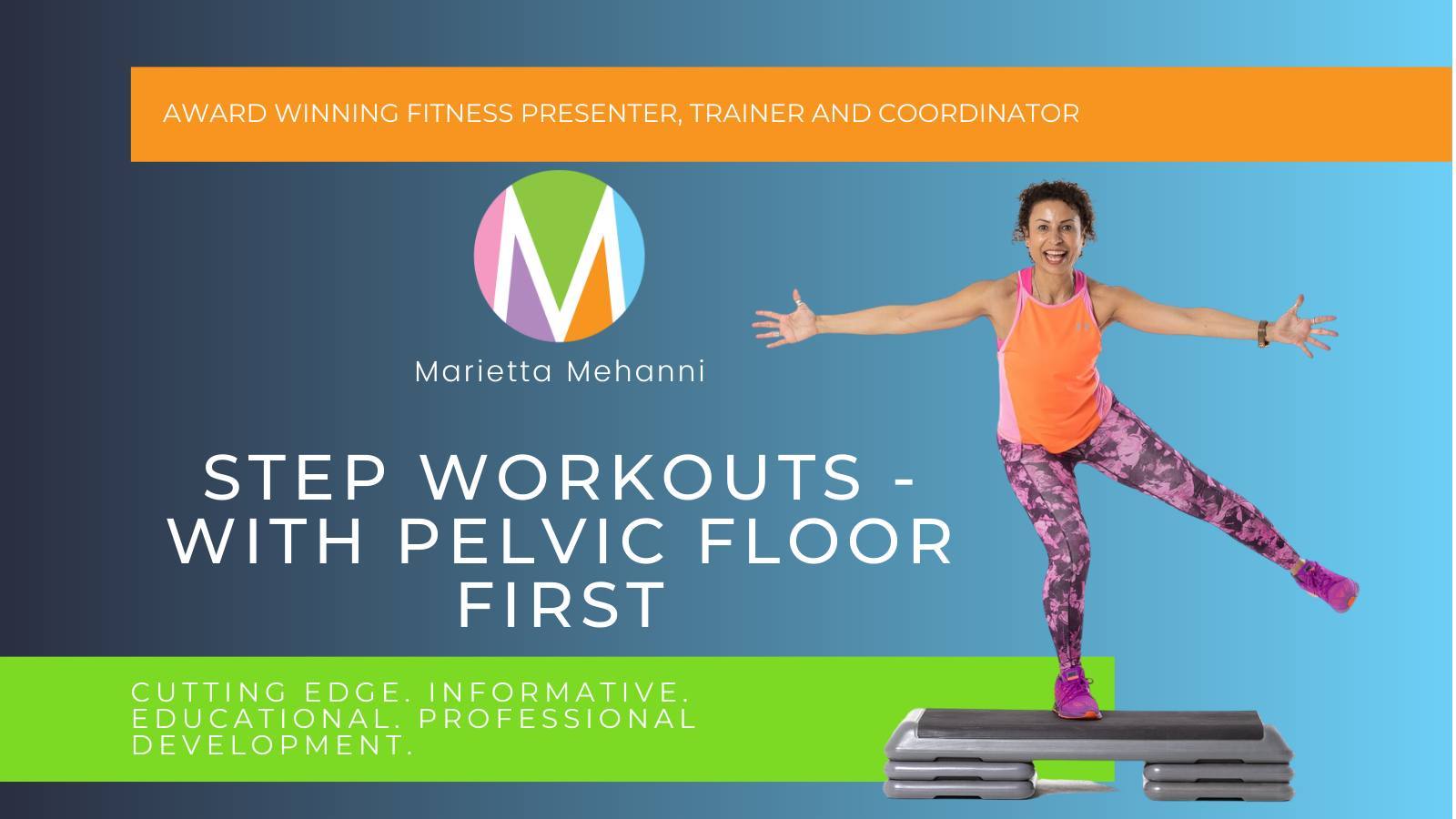Pelvic Floor First Step Workouts
Step aerobics designer Gin Miller’s primary goal was to develop a low-impact, cardiovascular workout that is safe for knees and other injuries. Since the early 1990s, this class format has changed considerably, including the speed, intensity and impact. Below are four guidelines to assist you during a typical step class to ensure your pelvic floor is not compromised.
Decrease the Impact
Step was traditionally a low-impact program, and many still are. However, there are now also step workouts where leaping and jumping are a primary way of developing intensity. Power jumps on the step can be eliminated by just performing the step action without the jump. Leaping along the length of the step can be negotiated by either standing behind the step and stepping into the centre of the step and off on an angle or by turning the step around so that you are stepping across the width of the step.
Jumping off or onto the step should be avoided. Instead, perform a stepping up and down action as a substitute.
Rhythm Changes
The stepping action can become a skipping or slow and quick-stepping action rather than the constant stepping up and down movement. These moves can be variable regarding the comfort level for the pelvic floor, but if there is a concern, perform the same action without the rhythm change or march on the floor to substitute the movement pattern.
Arm Actions
Adding upper body movements will certainly elevate heart rate, but it can also add more load on the pelvic floor. If this is the case, a simple modification is to keep the arms below shoulder height or remove any excessive upper body actions.
Height of the Step
Step workouts are designed so that the individual can choose which height is appropriate for their fitness levels. Depending on the make of the step, you will have a choice of 3 levels which you can also modify during the workout. If you are unsure how to change the height – some steps look like Lego pieces, ask the instructor, as they will show how to shift the blocks to decrease the height. The recommendation is that the lower the step height, the less pressure on the pelvic floor. Choose the lowest possible height if you are in the high-risk category (pre or postnatal, pre or post-menopausal or starting exercise).
Step workouts are fun and different from most other workouts because you have personal space on and around your step. So implement the alternatives above and enjoy a pelvic floor-safe workout.
If you would like to learn more or become a Step Instructor, join me for a FREE ‘Step from the Start’ one-hour Master Class at 10 am on Sunday, July 14th 2024. During the seminar, you’ll discover the fundamental techniques of freestyle Step and core moves that will empower you to design classes that you’ll love teaching and your clients will love taking. Don’t miss out on this opportunity to elevate your fitness career!


0 Comments